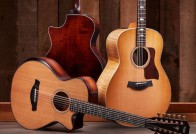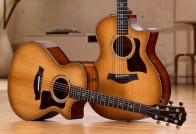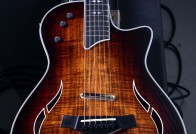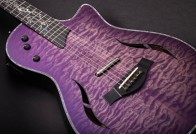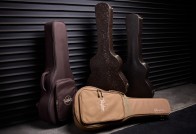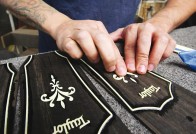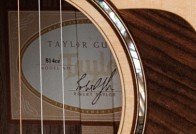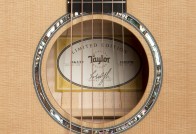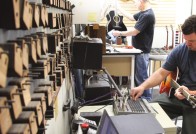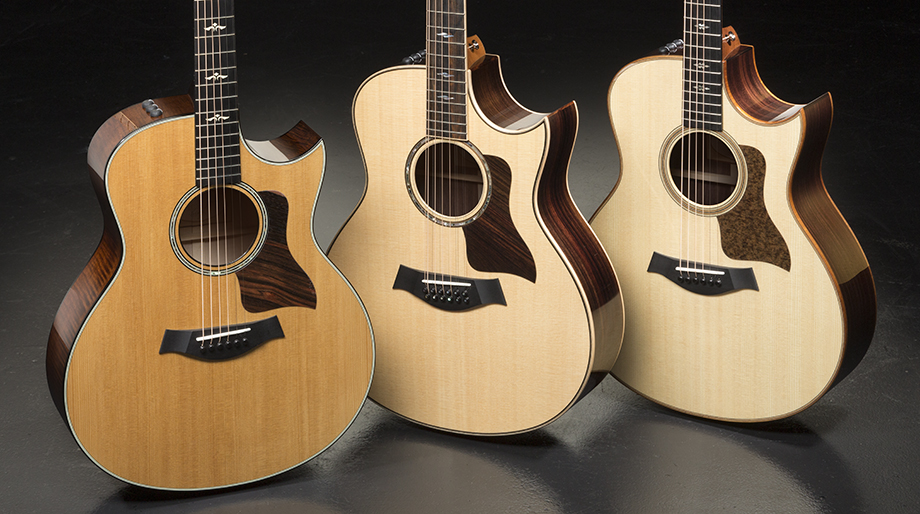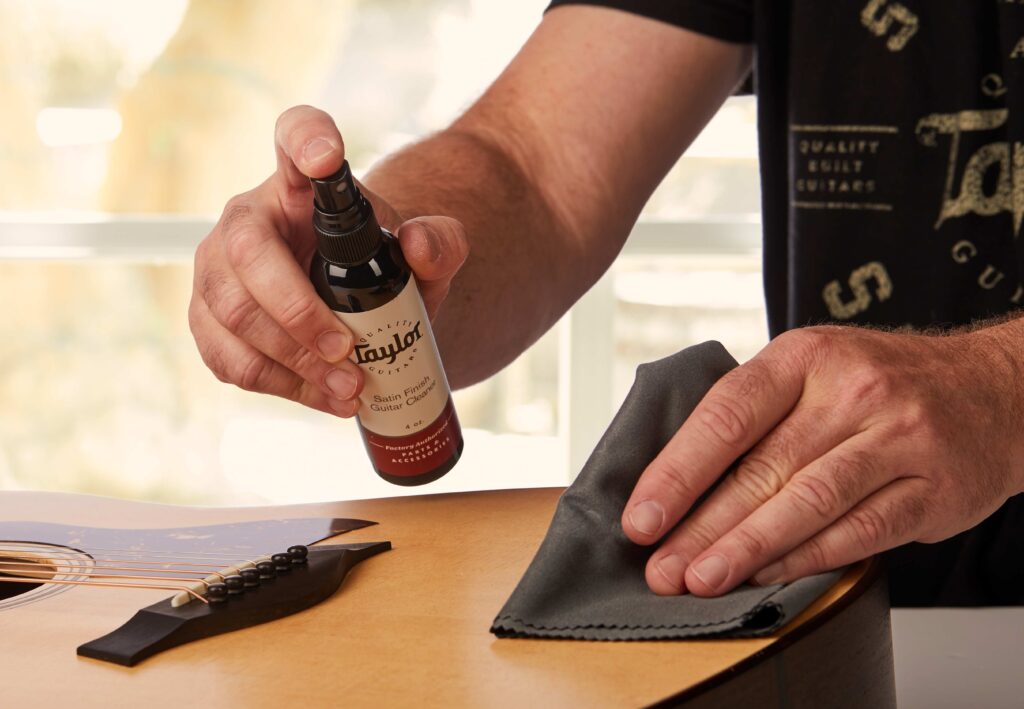Many of Taylor’s cutaway Grand Symphony models now sport a sharp new look — literally.
As of July of 2017, all cutaway steel-string Grand Symphony (GS) models from our 500 Series and higher are being built with a Florentine-style cutaway, whose scooped contouring comes to a horn-like point where it meets the treble-side curve of the body’s upper bout.
The Florentine, an alternative to the rounded Venetian cutaway featured on most of Taylor’s cutaway models, actually harkens back to some of Taylor’s earliest cutaway guitars. It was featured on our Jumbo guitars along with the first iteration of our small-body, fingerstyle-friendly Grand Concert, which debuted in 1984.
More recently, we introduced the Florentine as the standard cutaway for the Grand Orchestra body (the successor to the Jumbo) when we began making cutaway versions of the body style in 2016. The reason was mainly aesthetic — Taylor master guitar designer Andy Powers felt the larger radius curves of the Florentine shape blended harmoniously with the voluptuous body lines of the Grand Orchestra. Similarly, the scoop of the Florentine nicely complements the Grand Symphony’s full-bodied form.
Intricate Craftsmanship
Beyond its distinctive aesthetic flair, the Florentine cutaway differs from its Venetian counterpart in another way: it requires highly skilled hand-craftsmanship in order to produce it. In contrast to the supple curve of the Venetian cutaway, which at Taylor is bent using a largely automated, high-tech cutaway bending machine fabricated by our tooling department, the process of creating the Florentine cutaway is considerably more labor-intensive. The Venetian curve is also bent from one continuous side panel — the same piece that forms the treble half of the body — while the Florentine bending process requires two different wood pieces to form the sharp horn.
Our craftspeople actually start by building the entire guitar body as a non-cutaway. From there, a section of the treble-side upper bout is sliced out using a band saw and vacuum jig. Other carefully executed steps follow, including the reinforcement of the exposed area to create a solid glue surface for the scooped cutaway piece to eventually be attached.
The wood panel that will form the cutaway piece is matched with the other panels that were selected for the guitar’s sides in order to preserve a cohesive look in the wood’s color, grain structure, and other visual characteristics. To create the scooped cutaway shape, the wood panel is carefully hand-bent over a heated pipe that has been draped with a wet paper towel. (The resulting steam permeates the wood and helps it bend.) After cooling down, additional steps follow to properly mate, secure and trim the wood components. Among the finishing aesthetic touches is a careful process to create a cutaway cap that crowns the point of the horn to cover the seam where the wood components meet.
Does a Cutaway Impact the Sound of a Guitar?
People often ask whether a cutaway diminishes an acoustic guitar’s overall tonal output compared to a non-cutaway body. The truth is not by much. The taper of the guitar’s waist will actually have more of an impact on the soundboard’s ability to vibrate and create tone. The part of the body the cutaway removes is typically not a highly resonant area. Our opinion is that the access you gain to those upper-register notes with a cutaway far exceeds the minimal tone differences. And there really are no tonal distinctions between guitars made with a Venetian versus Florentine cutaway.
Beyond that, it’s really just a matter of aesthetic preference.
One point worth noting about our guitars is that either cutaway also serves to highlight the superb upper-register playability and intonation of Taylor necks and engages the full sonic palette of the woods chosen for each instrument.
Related: Acoustic Guitar Cutaways vs. Non-Cutaways
If you’re a fan of our Grand Symphony models but prefer a Venetian cutaway, don’t worry, you can still order it as a standard model option. Meanwhile, cutaway Grand Symphony models from our 300 and 400 Series will continue to feature our Venetian-style cutaway.
Why “Florentine”?
By many accounts, the origin of the term “Florentine” to identify the sharp cutaway traces back to Gibson mandolins. Andy Powers shared some thoughts based on his research over the years.
“My understanding is that the Florentine designation was Gibson’s way of describing a ‘fancy’ design at the turn of the 20th century. The Florentine art style was filled with curves, scrolls and filigree, with gold-leafed, gilded and inlaid fanciness. The early American mandolins carried this elaborate inlaid style over into the shape. From Gibson, you first saw a mandolin with one scroll or curlicue and three points, with one of the points forming a sharp cutaway. This carried over a few years later into one of the first cutaway guitars — their Style O Artist guitar — which was guitar-shaped in the lower bout, with a scroll and a pointed cutaway on the upper bout. It was known to Gibson during the teens as a Florentine-style guitar body. It was basically a giant mandolin strung like a guitar. Blues legend Big Bill Broonzy was known for playing one. The sharp point remained tied to the Florentine description.
“Later on, shortly before World War II, select archtop guitars started to receive rounded cutaways. Again, it was Gibson that started describing the round-style cutaway as ‘Venetian’, although they first marketed the feature with the name ‘Premier’. One could point out the Moorish/Gothic-influenced arched window shape prominent in the architecture around Venice and make a case the Florence style has elaborate scrolls and points, and that the Venice style has these arched windows. Eventually, guitar makers adopted the two descriptions as a way to denote the two cutaways.”
Go strum a Taylor guitar model with a Florentine cutaway today, by visiting your local authorized Taylor Dealer!





